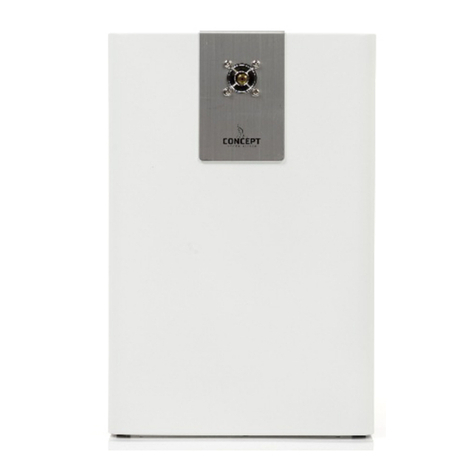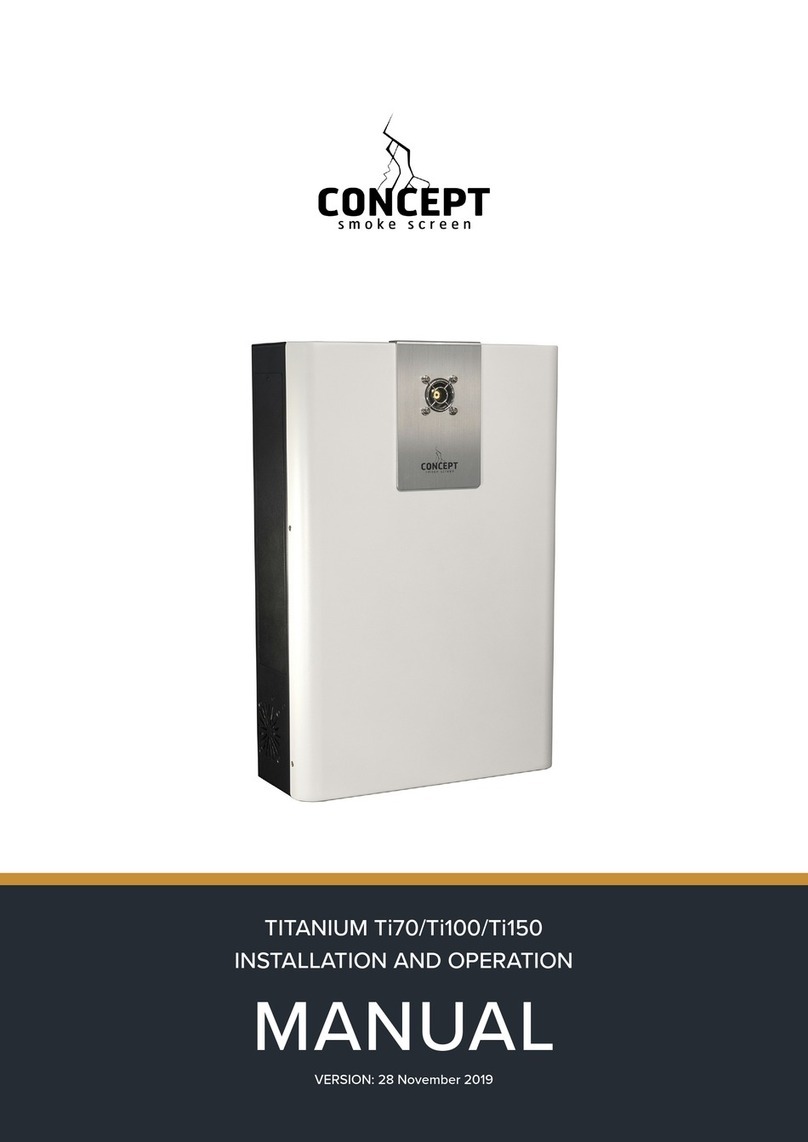
7
2.2 INSTALLATION PROCEDURE
1. Site the Smoke Screen and fix to the wall or ceiling as appropriate.
2. Select the “Service Mode” dip switch to “On”.
3. Make connections as required to the alarm panel, hold-off PIR and, if used, the Panic input.
4. Make connection to the Smoke Screen Interface (if used) and set the key switch to isolate.
5. Turn on the internal battery back-up.
6. With the battery power applied insert fluid consumable and make sure the fluid switch is closed correctly.
7. Connect and turn on the mains power.
8. The Smoke Screen will heat up to operating temperature in approximately 20 minutes.
9. Set correct time/date and smoke timing for the specified room size.
10. Ensure the “Service Mode” dip switch is selected to “Off”.
11. Make sure all tamper switches are closed.
12. If fitted set the Smoke Screen Interface key switch to ‘Ready’ and you are ready for test.
2.3 ACCESS
To access the PCB connections, programming panel, mounting holes, batteries and fluid, remove the front cover
by unscrewing the set screws on either side and unhooking it from the back plate; refitting is the reverse process.
Installation cable entry is through the serrated grommet on the left side of the back plate.
2.4 MOUNTING
The Smoke Screen can be mounted on a ceiling or a wall using the simple standard bracket supplied with the
unit. This flush-fitting bracket maximizes security by concealing all the mounting fastenings such that they can
only be accessed, or the Smoke Screen dismounted, by dismantling the unit. Moreover, the Smoke Screen has a
tamper protection switch to provide an alert in the unlikely event that it is disturbed. In all cases, the installer must
attach the Smoke Screen to the building structure using appropriate fasteners.
NB: When mounting the Smoke Screen ensure that the airflow through the vent holes in the rear of the unit is not
obstructed.
Wall and ceiling mounting
Ceiling or wall mounting is the same process except that rather than fixing the Smoke Screen direct to a ceiling
an intermediate unistrut section may be used or it can be suspended as described in the next section.
Attach the bracket to the wall or ceiling using
appropriate fixings.
Carefully hook the slots on the back of the
Smoke Screen onto the bracket (for clarity,
shown above not attached to the ceiling/wall).
Slide along to align the screw fixing holes.
The unit will now hang on the bracket.
Fit, and ensure tight, 1x M6 set screw with
washer in the hole in the back of the Smoke
Screen alongside each of the two mounting
slots. Access to the fixing holes is through the
fluid and heater block compartments.






























